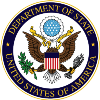Cooperation at the Tigris: U.S. and Iraqi Efforts to Maintain the Mosul Dam
By: Stuart E. Jones, Acting Assistant Secretary of State for the Bureau of Near Eastern Affairs at the U.S. Department of State.
The United States is committed to helping our Iraqi partners defeat ISIL in an effective and sustainable way, particularly as Iraq works to stabilize and restore cities and critical infrastructure liberated from the terrorist group’s control. In addition to the fight for Mosul itself, we’ve been pleased to answer Iraq’s request for international help to prevent the failure of the Mosul Dam. U.S. and Iraqi scientists estimate that a breach of the Mosul Dam, one of the largest pieces of water infrastructure in the Middle East, could have a devastating impact for over a million Iraqis along the Tigris River, from Mosul itself all the way down to Baghdad. Its failure could also be a threat to U.S. personnel and our Coalition members working alongside Iraqis and drastically reshape the nature of the fight against ISIL in northern Iraq. Today, thanks to close U.S.-Iraqi partnership, however, Mosul Dam is on a path toward greater stability.
From the earliest days of the Counter-ISIL campaign in Iraq, one of the initial goals of our U.S. military efforts was to help Iraqi and Kurdish forces reestablish control over the dam. Subsequently, the White House requested the State Department lead an interagency Task Force to look the steps necessary to help our Iraqi partners prevent a failure while simultaneously developing contingency plans to should to an emergency, were the dam to breach. Over the past two years, this Task Force has brought together the Department of State, the Department of Defense (including the U.S. Army Corps of Engineers), the Department of the Interior, and the U.S. Agency for International Development (USAID), deepening coordination among all quarters of the U.S. and Iraqi governments as we sought to stabilize the dam and forestall a disaster. Within USAID, the Office of U.S. Foreign Disaster Assistance had a special role in developing a contingency humanitarian response and early warning plan, which included an emergency notification system and support of public awareness campaigns to help local communities located along the flood plain.
First, we worked shoulder-to-shoulder with our Iraqi partners to better understand the highly complex problem. The Department of State invested more than $10 million to equip Iraq with technical monitoring systems critical to both guide repair efforts and, in the worst case, provide an early warning system in the event of a breach. Second, the U.S. government led an effort to raise more than $300 million in financing, from both the World Bank and the Government of Italy, to undertake major repair efforts. The availability of this financing enabled the Government of Iraq, with technical support from the U.S. Embassy, to enter a contract with the Trevi Group, a preeminent Italian dam construction company, to repair the dam. That work is going on right now to repair the structure of the dam.
Third, the U.S. Army Corps of Engineers is providing the architecture and engineering oversight at the request of the Iraqi government. Trevi and the Corps are bringing cutting edge technological solutions these efforts to ensure a strengthened dam.
But emergency planning has also been important. So third, USAID has supported the United Nations and the Government of Iraq to educate the public of the risks associated with the dam and, more importantly, what they can do to mitigate those risks. USAID and the UN Development Program have helped the Government of Iraq to develop an early warning system. At-risk communities will now have the capacity to alert their publics to get out way of fall out from dam failure. This includes long-range sirens, procured with a U.S. grant.
On May 8, 2016, the Government of Iraq air-dropped leaflets into Mosul that provided guidance on what actions to take in the case of a dam failure. On September 1, 2016, with USAID’s support, the Iraqi Red Crescent Society launched a week-long social media campaign — which included flood preparedness messages — on seven Iraqi television stations. Information on flood preparedness and emergency services also aired on two Iraqi radio stations, were sent out as text messages, and were posted on billboards.
Finally, we have supported contingency planning. USAID’s Office of U.S. Foreign Disaster Assistance has prepared a plan for humanitarian response that includes pre-positioned critical emergency supplies that build on our efforts to assist the Iraqi people who have escape Mosul thanks to the advance of Iraqi Security Partners. USAID has also worked with its United Nations and NGO partners to examine existing humanitarian capacity in Iraq, including areas of operations and existing stocks, warehouses, and transportation.
This close cooperation — and indeed this comprehensive solution — was made possible by the vision and leadership of Prime Minister Haidar al Abadi, himself an engineer, who recognized the risks posed by the dam and the benefits of timely repairs, early warning and contingency planning.
Both the Government of Iraq and the United States will need to be vigilant to the risks posed by the dam, but thanks to White House leadership we are indeed on the path to stabilizing the dam for future generations.
This story originally appeared on DipNote, the U.S Department of State’s Official Blog.
